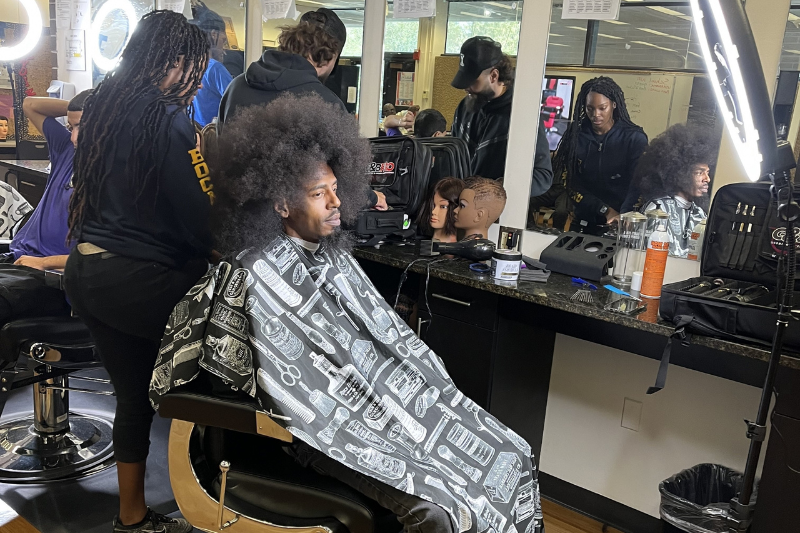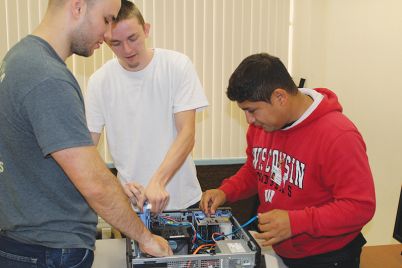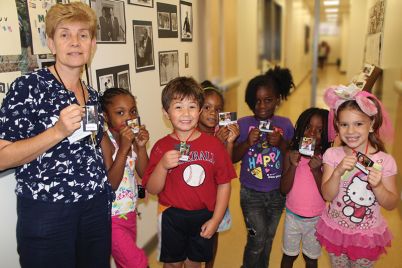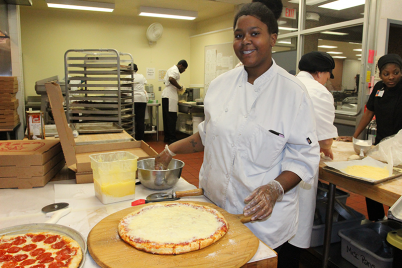Pinellas Technical College barbering instructor, William Anderson, said barbering has evolved over the years, and as the price of service has gone up, a barber can earn $1,000 a week and up.
BY FRANK DROUZAS, Staff Writer
ST. PETERSBURG — Trying to remain a cut above in education, Pinellas Technical College is now offering its Barbering program at the St. Petersburg campus.
Longtime master barber and new instructor William Anderson began his involvement with PTC as an advisor to the Barbering program for the Clearwater campus. He spent a few years there before Boe Norwood, director of the St. Pete campus and client of Anderson’s, asked him if he’d be interested in teaching his profession to students at PTC St. Pete.
The St. Pete native has an extensive background in the art of haircutting, graduating from barber college in 1978 and has been a barber for almost 45 years. He has also always possessed a knack for teaching.
“I’ve trained a lot of guys, giving a lot of people in the community an opportunity, both here in St. Pete and a lot of places,” Anderson said. “I’ve had several shops started and helped train a lot of barbers, and so it was just natural for me to want to continue in this field of training young men and young women to be master barbers.”
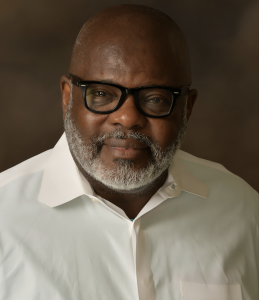
Longtime master barber and new instructor William Anderson has an extensive background in the art of haircutting.
For Anderson, it runs in the family. His father was a barber, as was his father’s father. His sister is a master barber, and he has two younger brothers who attended the PTC cosmetology program and became barbers as well.
“And my great grandfather was a barber; I found out,” he said. “So, myself, I’m a fourth-generation barber.”
He believes this program is a welcome addition to the St. Pete campus and the community and an attractive alternative to attending expensive universities.
“You can take [the Barbering] program and spend $6,000 or less and be working within a year,” he said.
Not only is it a good opportunity for someone to learn a craft, launch a career and provide for their family, but it is open to all, as even ex-offenders can get certified, Anderson said.
“I saw some of the applications to the state,” he said. “If you have a felony or been arrested, all you’ve got to do is put that on the application, and they do an investigation. And I don’t see them turning down anybody.”
Barbering has evolved over the years, Anderson stated, and as the price of service has gone up, a barber can earn $1,000 a week and up.
“If you’re committed, you can do that easily,” he said.
Benefits of the career include not only making good money and working flexible hours but being an integral part of the community. Anderson noted that one of the things he’s learned in his 45 years is to be a good listener and found himself at times becoming an “on-the-spot counselor.”
“As a barber standing behind the chair, a lot of times you’re counseling; you’re sharing with their situation, giving them ideas, and you’re learning things at the same time that you can share with that person or help them to build character.”
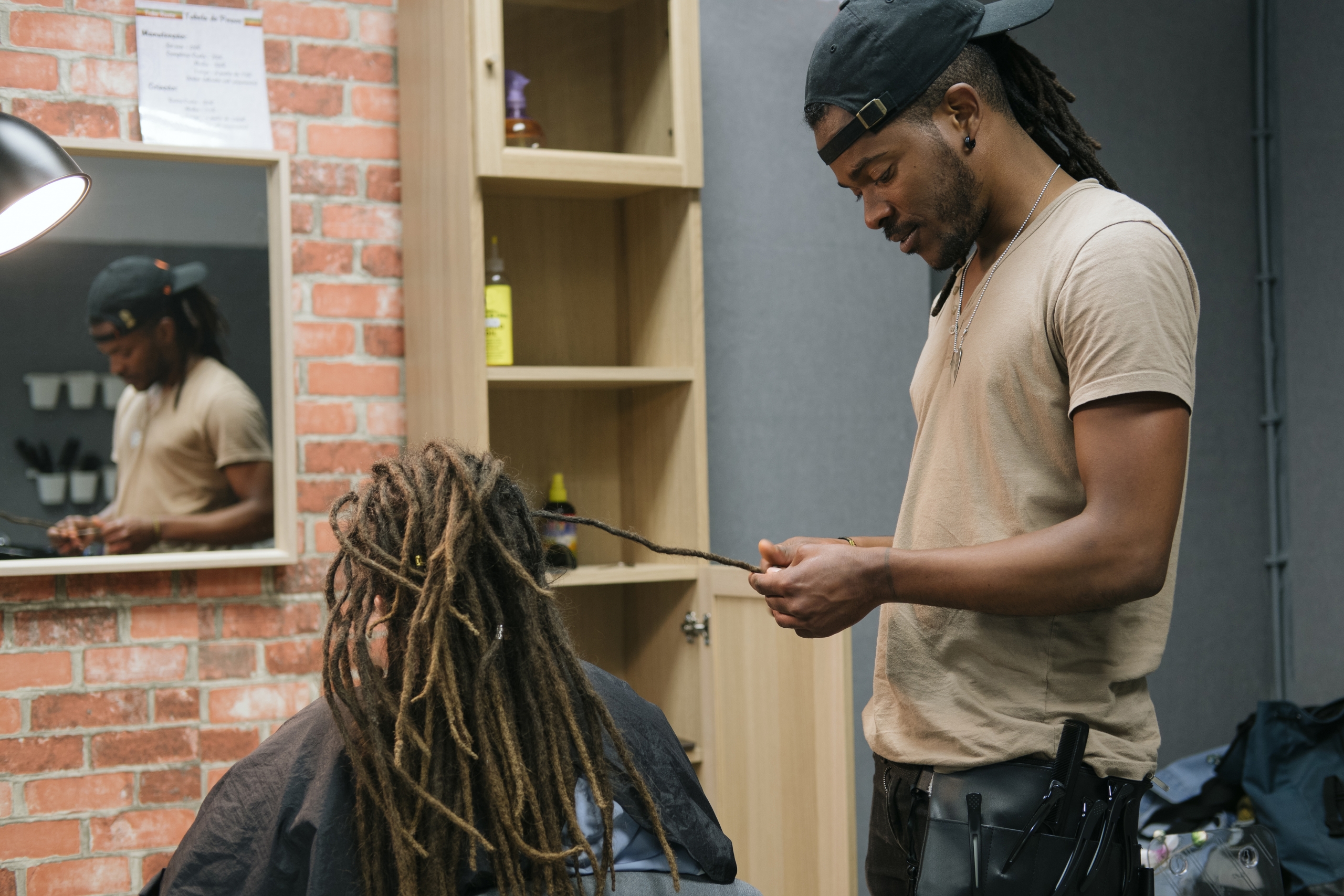
Students will identify and perform hairstyles, mustache, and beard designs and perform on clients with wet sets, thermal styling, and braided styles.
Since Anderson has cut hair for multiple generations of clients in the same family, he has had a chance to become a part of their lives like few others have. He added there is also a business portion of the program to guide students about necessities such as paying shop rent and filing taxes.
To provide students with real-life experience, the PTC Barbering program is open to walk-ins seeking haircuts, which start at $5. As the program attracts people of all ages — whether they’re youngsters just starting out or older folks looking for a change — Anderson pointed out his current students’ ages run from 19 to 71.
Prospective students must have a high school diploma or a GED to attend PTC, and funding is available, including qualifying for a Pell Grant, which provides financial aid. The program, with the goal of Florida state licensure for students, consists of a planned sequence of courses.
In the initial course (320 hours), students learn to use safe, sanitary, and efficient work practices; identify, prepare, and perform hair shaping, cutting and correct procedures for shampooing, conditioning and scalp treatments.
During the second phase (150 hours), they will identify and perform hairstyles; identify, prepare and perform mustache and beard designs and identify, prepare and perform on clients with wet sets, thermal styling and braided styles.
In the third part of the sequence (300) hours), they will identify, prepare, and perform hairpieces, wigs, and hair attachments; demonstrate knowledge of professional development (employability skills) and demonstrate required knowledge of Florida law and the Florida State Board of Cosmetology.
In the final segment (130 hours), students will identify and prepare hairpieces and hair attachments; identify and perform permanent waving/reconstruction and curl/chemical relaxing, identify and apply temporary/semi-demi permanent and permanent color and identify and apply lighteners and specialty color techniques.
After the 900-hour course, students will take a state examination to become a master barber; however, they can challenge the test after 600 hours to become a “restricted barber.” Unlike master barbers, restricted barbers are not allowed to use chemical services or razors.
Anderson said that hairstyles have changed and barbering has adapted, but “once you learn the basics, you can do any kind of haircuts.”
For more information about the PTC Barbering program, visit myptc.edu or call (727) 893-2500. PTC St. Pete is located at 901 34th St. S.

